Underwater Flange Connection Methods for Submarine Pipelines
Underwater flange docking is an essential part of submarine pipeline installation. Improving the efficiency of this process is crucial for reducing the overall cost of submarine pipeline projects. This study examines flange docking methods under varying marine environments and conditions. It introduces several techniques, including the use of an engineering vessel crane, counterweights and gantries, flange tensioners, chains and flotation bags for flexible hose docking, and horizontal booms for coordinating flexible hose flange connections. The applicability of each docking method is evaluated, and a selection guideline is proposed to support engineering decisions in submarine pipeline flange docking operations.
Submarine pipelines are typically composed of horizontal pipelines, expansion bends, and risers. With continuous improvements in domestic production technology for underwater pipeline flanges, and as the development of China’s offshore oil and gas fields advances into deeper waters, flange connections are increasingly replacing traditional welded joints for expansion bends, risers, and horizontal pipelines. This shift simplifies the installation process of seabed pipelines. However, it also presents a new challenge, as tasks that were previously performed above water must now be completed underwater, particularly the connection of pipeline flanges. Given the high cost of deploying large vessels, the efficiency and quality of underwater flange connections have a direct impact on the overall project investment. This paper investigates methods for submarine pipeline flange docking under varying sea conditions and environmental factors.
The crane-assisted submarine pipeline flange docking method is primarily used for connecting flanges on steel submarine expansion bends. In this method, a crane on an engineering vessel is used to hoist the steel expansion bend pipeline, while a diver observes and provides guidance underwater. The position and height of the pipeline are adjusted underwater by rotating and lifting it with the crane. A deck assistant pulls a traction guide cable to control the direction of the expansion bend, aligning the flange with the flange of the underwater riser or horizontal pipeline. Once properly positioned, the diver inserts the bolts directly to complete the flange connection, as shown in Figure 1.
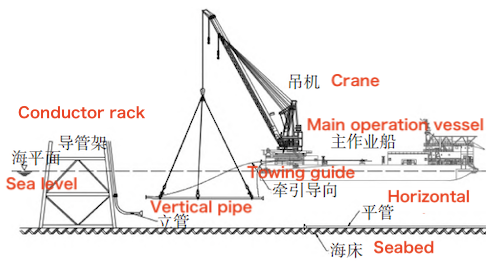
Figure 1 Expansion bend flange docking assisted by an engineering ship crane
This method is mainly suitable for the Bohai Sea and the shallow waters of the East China Sea and South China Sea. Due to the relatively shallow depths in these areas, conventional anchored engineering vessels can operate effectively. Under normal weather conditions, the vessel generally remains stable at sea, and significant movement is unlikely during the underwater docking of expansion bend pipelines hoisted by the crane. This ensures that both the submarine pipeline and flanges remain undamaged and that divers can work safely underwater. However, current velocity in shallow water areas often fluctuates significantly, especially in the East China Sea and Bohai Sea, where the daily low-tide periods with reduced current speed are limited. According to the guidelines of the International Association of Diving Contractors, diving operations are not recommended when the current velocity exceeds 1 knot, which restricts the effective daily duration of underwater work. Additionally, underwater visibility in these areas is poor, making precise flange docking more challenging. Nonetheless, the crane-assisted docking method can significantly reduce the divers' underwater preparation time, enhance the flexibility of the flange docking process, minimize the impact of current velocity on the connection work, and effectively improve the overall efficiency of offshore construction.
The method for docking the counterweight block and gantry auxiliary submarine pipeline flange involves the construction support engineering ship lifting the pipeline to be docked onto the seabed along the designed route. Multiple counterweight blocks are placed around the pipeline, and slings, clamps, and fall chains are used to connect the pipeline and the counterweight blocks. The pipeline is then adjusted to the designed position by retracting and releasing the fall chain, as shown in Figure 2.
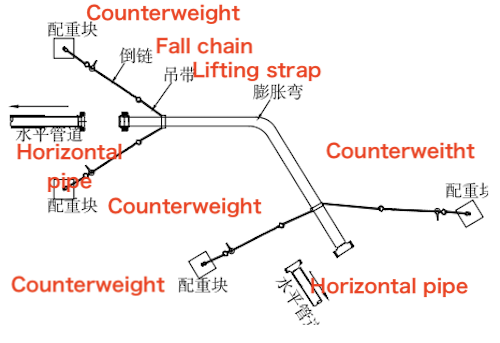
Figure 2: The underwater position of the counterweight block to adjust the pipeline
Next, a gantry hanger is positioned above the pipeline, and it is connected to the pipeline to be docked using the fall chain and sling, as shown in Figure 3. The objective is to maintain the horizontal and concentric alignment of the lifting pipeline adjustment flange and the existing underwater pipeline flange (which is lifted approximately 0.3 to 0.5 meters above the seabed using floating bags). Finally, bolts are inserted between the docking flanges, sealing gaskets are placed, and they are pre-tightened to complete the flange docking, as shown in Figure 4.
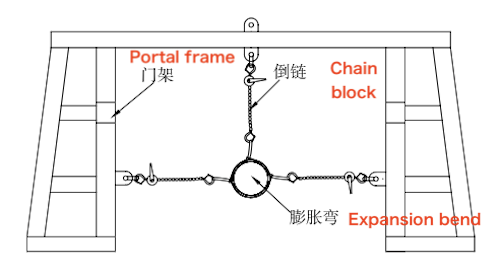
Figure 3: The connection between the gate hanger and the sea pipe
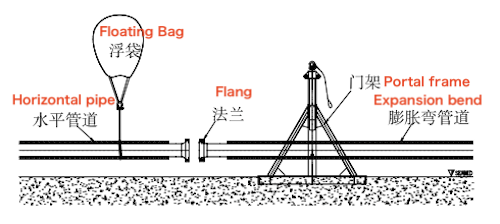
Figure 4: The gate hanger adjusting the concentricity of the pipeline flange
This method is particularly suitable for areas with good underwater visibility and relatively calm water flow, allowing divers to work continuously underwater. It is especially effective in deeper water areas where the use of cranes and traction guide ropes cannot precisely adjust the position of the expansion bend underwater. This method allows for quicker and more accurate adjustment of the expansion bend’s position, preventing the ship’s movement from impacting the safety of underwater workers and pipelines in unstable sea conditions. Currently, this method is commonly used for flange connections of submarine pipelines in offshore oil and gas fields in deeper water areas (greater than 50 meters) of the South China Sea and the East China Sea.
In situations where the two underwater flanges to be docked are far apart, the flange surfaces are not concentric, or the methods described above cannot achieve flange docking, the flange tensioner can be used to adjust the distance and concentricity between the two flanges and complete the docking. The flange tensioner typically consists of a reaction fixture, a tensioning unit, tensioning steel cables, a hydraulic power pipeline, and a hydraulic station. The operating principle is shown in Figure 5.
During use, two tensioning steel cables are symmetrically inserted into the two flanges to be docked. The reaction fixture is then installed, and the hydraulic power pipeline is connected. The distance between the two flanges is reduced through the tensioning unit and steel cables. Simultaneously, the concentricity of the two flanges is adjusted. Once the distance is sufficiently reduced, bolts are inserted into the corresponding bolt holes of the two flanges, and the flange tensioner is removed to complete the flange docking.
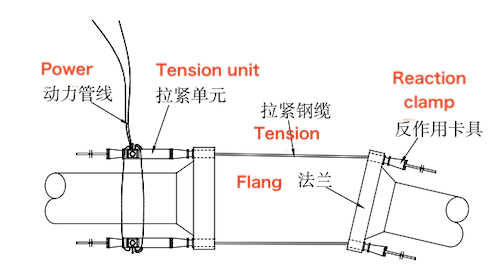
Figure 5: Working principle of the flange tensioner
Flange tensioners are particularly useful in areas with poor underwater visibility and harsh sea conditions, as they improve the efficiency of flange docking and reduce the impact of challenging conditions on underwater construction safety. In a high-tide area of the East China Sea, where underwater visibility is almost zero and the construction ship fluctuates by 2 meters, the flange tensioner was successfully used to complete the submarine pipeline flange docking safely and smoothly, ensuring the oil pipeline resumed production on schedule.
Compared with steel submarine pipelines, flexible composite marine hoses offer better adaptability to uneven seabeds. Their longer continuous production lengths mean fewer joints are required during installation, improving efficiency. These hoses are also easier to transport, reusable, and contribute to a lower overall cost for the submarine pipeline project. As a result, the use of flexible composite marine hoses for subsea oil and gas transmission is becoming increasingly common. However, because the flanges of flexible hoses are more difficult to position and align during underwater docking compared to steel pipeline flanges, special methods are often required to complete the flange connection.
In the chain and float bag-assisted method, two chain hook points (with slings or short steel wire loops) are symmetrically installed on the structure near the underwater flange. Two slings are symmetrically wrapped around the hose at the joint area, and chain hooks are used to connect the hose end to the structure near the flange. Two floating bags are positioned, one at the hose joint and another at a certain distance from it, and inflated to slowly lift the hose end horizontally, bringing it to the same height as the underwater flange. By tightening the fall chains, the two flanges are gradually brought closer until the bolts can be inserted, completing the flange docking process. The principle of this method is illustrated in Figure 6 and is mainly suitable for deep water and other sea areas with relatively calm currents near the seabed.
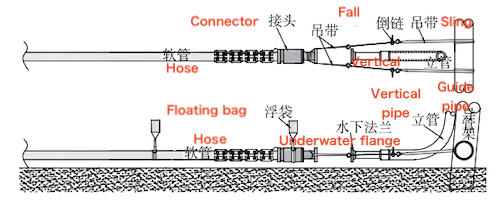
Figure 6: Flexible hose flange docking assisted by fall chain and floating bag
The horizontal lifting beam method is used to assist with seabed flexible hose flange docking. It is similar to the fall chain and float bag-assisted method, except that the float bags are replaced with a horizontal lifting beam. The fall chain and sling are connected to the end of the flexible hose, and the beam is lifted by a crane to adjust the height of the hose flange for docking with the underwater flange. The principle of this method is shown in Figure 7. This approach makes it easier to achieve a level lift of the hose end, align the flange direction, and precisely control the overall lifting accuracy. It is mainly suitable for shallow waters with calm sea conditions.
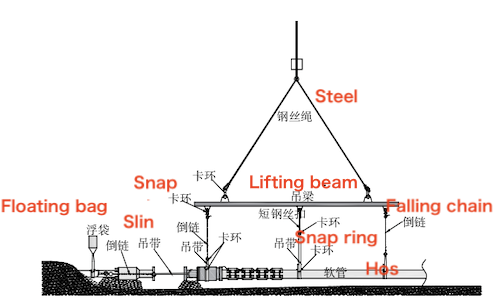
Figure 7: Underwater flange docking using a horizontal lifting beam and flexible hose
Selecting the most suitable underwater pipeline flange docking method based on the pipeline’s location and the surrounding marine environment can significantly improve offshore operation efficiency, enhance construction quality, reduce operational risks, and lower the overall project cost. In shallow water areas, particularly in the Bohai Sea and the coastal waters of the East China Sea, diver working time is limited due to rapidly changing ocean current speeds and high flow rates. In such conditions, using cranes to assist with underwater flange docking can greatly improve operational efficiency.
In deep water areas, however, the limited reach of the crane on the construction vessel makes it difficult to adjust the flange position accurately underwater. Nevertheless, due to the slow changes in seabed current speed, lower flow rates, and good underwater visibility, divers are generally able to work around the clock. In these conditions, using floating bags to assist with flange docking is more effective for ensuring construction quality and safety while maintaining efficiency. In areas with complex sea conditions, operator and equipment safety must be prioritized. The use of cranes for underwater flange docking should be minimized where possible. Instead, chain systems or flange tensioning devices should be selected based on factors such as the position of the flange to be docked, underwater visibility, and current conditions, in order to improve both the efficiency and quality of the docking process.
This paper summarizes various submarine pipeline flange docking methods suitable for different domestic sea areas and environmental conditions. With the rapid advancement of China’s marine engineering technology, China is now fully capable of independently carrying out the laying and installation of submarine pipelines. Significant experience has been accumulated in flange docking techniques, resulting in a mature construction technology system. Currently, many foreign countries and regions have developed ultra-deepwater offshore oil and gas fields and have mastered intelligent pipeline docking methods based on underwater robotic control. Although some domestic engineering units and research institutes have also been working on related technologies and have achieved certain progress, these solutions are not yet fully mature or complete. To support the offshore oil industry’s expansion into deepwater fields, it is imperative to develop a reliable, independently engineered intelligent docking method for deepwater pipelines. This will be essential for accelerating the strategic advancement of China’s deepwater marine engineering capabilities.
Related News
- Failure and Crack Analysis of an EO/EG Unit Tower Inlet Flange
- Pipe Flange Bolt Tightening in LNG Projects: Key Considerations
- Ultrasonic Testing of High-Neck Flange Welds
- Underwater Flange Connection Methods for Submarine Pipelines
- Key Technologies for Pressure Vessel Testing and Flange Connection Design
- Installation of Main Bolts for Lap Joint Flange in High-Temperature Gas-Cooled Reactors
- Structural Design and Finite Element Analysis of Anchor Flanges
- Key Welding Technology for High-Neck Flange and Steel Pipe Joints
- The Design and Calculation of Stamped Lap Joint Flanges
- Development of Manufacturing Large Anchor Flanges
